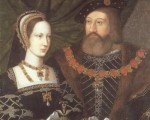
In today’s Claire Chats I talk about the secret marriage of Mary Tudor, dowager Queen of France, and Charles Brandon, Duke of Suffolk, in 1515.
[Read More...]
In today’s Claire Chats I talk about the secret marriage of Mary Tudor, dowager Queen of France, and Charles Brandon, Duke of Suffolk, in 1515.
[Read More...]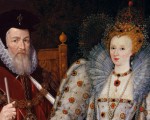
In today’s Claire chats I continue my examination of the fall of Mary, Queen of Scots, by looking at the controversy surrounding the death warrant and examining the Bond of Association and the Act for the Queen’s Safety.
[Read More...]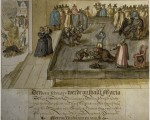
On this day in history, Wednesday 8th February, Mary, Queen of Scots was executed at Fotheringhay Castle, following the arrival of her death warrant at the castle the day before.
Mary had been tried in October 1586 for her involvement in the Babington Plot, a plot to assassinate Queen Elizabeth I, and had been found guilty. Elizabeth I put off signing her death warrant, struggling with the idea of killing an anointed monarch, but finally signed the warrant on 1st February 1587, although Elizabeth claimed later that she ordered her secretary, William Davison, not to do anything with it for the time being. As I mentioned in my article on the death warrant, Elizabeth’s Privy Council met and agreed to send the warrant to Fotheringhay without the Queen’s knowledge. It is impossible to know exactly what happened. Did Davison misunderstand the Queen’s instructions and intentions? Probably not. Some historians believe that William Cecil, Lord Burghley, chose Davison to be a scapegoat because he realised that Elizabeth needed someone to take the responsibility for Mary’s death away from her, but others believe that it was Elizabeth who chose Davison as the scapegoat.
[Read More...]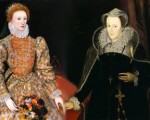
In this week’s Claire Chats I start a two part series on Elizabeth I and the fall of Mary, Queen of Scots. Today, I focus on what led to Mary, Queen of Scots’ execution and next week I will examine the controversy surrounding her death warrant.
[Read More...]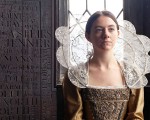
If you’re in the UK or have access to the UK’s BBC2 then make sure that you catch this programme on BBC2 today (1st February 2016) at 9pm. Here’s the blurb from the BBC:
[Read More...]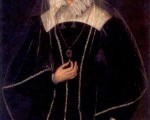
On this day in history, 1st February 1587, Elizabeth I called her secretary, William Davison, to her and asked him to bring her Mary, Queen of Scots’s death warrant. She then signed it.
Mary, Queen of Scots, had been tried in October 1586 for her involvement in the Babington Plot, a plot to assassinate Queen Elizabeth I. As the trial closed, Mary demanded that she should be heard in front of Parliament or the Queen, but she was fighting a losing battle. Sentence was delayed as long as possible, by order of Elizabeth, but on 25th October the commission reconvened and found Mary guilty. On 29th October, Parliament met to discuss Mary, the Babington Plot and her role in Lord Darnley’s murder, and it was decided that they should petition Elizabeth to execute Mary. This put Elizabeth in a difficult position as she did not want to be accused of regicide. On the 4th December, Mary was publicly proclaimed guilty.
[Read More...]
On 14th January 1515, Charles Brandon, Duke of Suffolk, was sent to France under orders from Henry VIII to bring back Henry’s sister, the newly widowed Mary Tudor. Brandon would see to Mary’s safe return, but she would not be a widow on her return but, instead, a newly married woman.
[Read More...]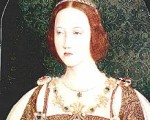
On this day in 1514, Mary Tudor, Queen of France, processed into Paris following her coronation the day before at St Denis.
It was a lavish occasion and must have been an incredible sight. According to Pierre Grigore, the pageants of Mary’s triumphant entry into the city included:
[Read More...]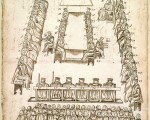
On this day in history, 14th October 1586, the trial of Mary, Queen of Scots, began at Fotheringhay Castle in Northamptonshire. Historian John Guy, author of My Heart is My Own: The Life of Mary Queen of Scots, has written a brilliant chapter on Mary’s downfall, “Nemesis”, and I have him to thank for the information in this article.
Mary Queen of Scots had, at first, refused to appear before Elizabeth I’s commission, but had been told by William Cecil that the trial would take place with or without her. She appeared in front of the commission at 9am, dressed in a black velvet gown and a white cambric cap and veil. Mary then protested against the commission, arguing that the court was not legitimate and arguing against the fact that she was not allowed legal defence and was not able to call any witnesses. Mary was also not permitted to examine any of the documents being used against her. Her protests were in vain and the prosecution went ahead and opened the trial with an account of the Babington Plot, arguing that Mary knew of the plot, had given it her approval, agreed with it and had promised to help. Mary protested her innocence:
[Read More...]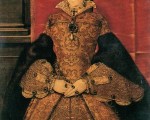
The following letter was written by Princess Mary, the future Mary I, to her brother Edward VI on 19th August 1551. Henry Ellis, editor of “Original Letters, Illustrative of English History…” explains:
“The following Letter from the Princess Mary to her brother, is preserved upon the Books of the Privy Council. It is probably the best specimen which we have in our power to give of her talent at writing: and, with the singular Paper which follows it by way of comment, will show her to have been a woman of more intellect than the world has usually supposed. Queen Catherine Parr took great pains in the education both of Mary and Elizabeth.
[Read More...]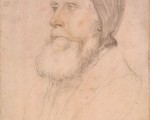
The Battle of Clyst St Mary, which was a battle fought during the Prayer Book Rebellion, took place on 5th August 1549 at the village of Clyst St Mary, 3 miles east of Exeter in Devon.
The Devonian and Cornish rebels were defeated by Lord Russell’s troops, and around 900 prisoners were massacred later that day on Clyst Heath.
[Read More...]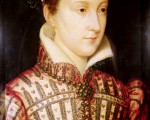
On 24th July 1567, Mary, Queen of Scots, who was imprisoned at Lochleven Castle and who had recently suffered a miscarriage, was forced to abdicate. The Scottish crown was passed on to her one year-old son, James, who became James VI of Scotland, with his uncle, Mary’s illegitimate half brother, James Stewart, Earl of Moray, acting as regent.
Claude Nau de la Boisseliere, Mary’s private secretary, recorded this event in his memoirs, which were translated from French into English as The History of Mary Stewart: From the Murder of Riccio Until Her Flight Into England:
[Read More...]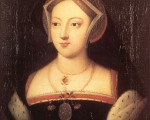
Today we have an article by Sarah Bryson, author of Mary Boleyn: In a Nutshell and a regular contributor to the Tudor Society.
Mary Boleyn is most certainly a woman of mystery. Her younger sister was Anne Boleyn, second wife of Henry VIII and Queen consort of England. Mary’s brother was a well-known member of Henry VIII’s court, who was evangelical in his religious beliefs and who, like his sister Anne, ended up on the scaffold. Mary’s father was also an important member of Henry VIII’s court. Thomas Boleyn was a talented man, who was fluent in French and who was sent on many missions as an ambassador for England. He was cunning and smart and used his skills and wits to provide a fantastic education for his children, as well as to further himself and his family at court. And yet when we look at Mary’s life compared to her famous siblings and father so little is known.
[Read More...]
After declaring herself queen the previous day, in front of her household at Kenninghall, Mary Tudor, daughter of Henry VIII and half-sister of the late King Edward VI, wrote the following letter to the privy council:
“My lords, we greet you well and have received sure advertisement that our dearest brother the King and late sovereign lord is departed to God. Marry, which news, how they be woeful unto our hearts, He wholly knoweth to whose will and pleasure we must and do humbly submit us and our will.
[Read More...]
Mary Tudor, Queen of France, and Charles Brandon, Duke of Suffolk.[/caption]Mary Tudor, Queen of France, was the younger sister of King Henry VIII. Born to King Henry VII and Queen Elizabeth of York in 1496, Mary was one of eight children and one of only three to survive to adulthood. Tragedy struck Mary at just seven years of age when her older brother and heir to the throne, Arthur, died in 1502. Less than a year later, Mary’s mother Elizabeth of York died trying to give Henry VII another son. Then, when Mary was eight years old, her older sister Margaret, then fourteen, left England for Scotland to marry King James IV. Mary and her older brother Henry were the only two siblings left in England and it has been suggested that during this time, growing up together, they formed a close bond which survived until Mary’s death.
[Read More...]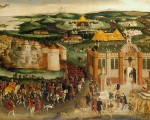
The Field of Cloth of Gold was an historic meeting between Henry VIII and Francis I of France to solidify the Treaty of London. It ran from 7th June 1520 until 24th June 1520 and was held on a field between the English stronghold of Guînes and the French town of Ardres, to solidify the Treaty of London.
[Read More...]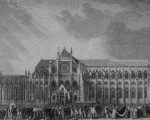
Here are some links for primary source accounts of Anne Boleyn’s coronation, and the pageants and processions that went with it, on 1st June 1533:
[Read More...]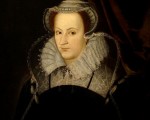
Mary, Queen of Scots, was born at Linlithgow Palace in Scotland on 8th December 1542. She was the daughter of James V of Scotland and his second wife, Mary of Guise, and the granddaughter of Margaret Tudor (Henry VIII’s sister) and James IV of Scotland. On the 14th December, when she was just six days old, Mary became Queen of Scotland after her father died of a fever. She was crowned Queen on 9th September 1543 at Stirling Castle. As Mary was a baby, James Hamilton, 2nd Earl of Arran, acted as regent until 1554 when he surrendered the regency to Mary’s mother, Mary of Guise, who acted as regent until her death in 1560.
[Read More...]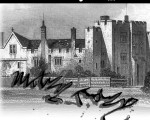
I’m delighted to be the final stop on Sarah Bryson’s book tour for Mary Boleyn: In a Nutshell, a wonderful book which is exactly what it says it is.
Many of you will know Sarah from her blog Anne Boleyn: From Queen to History and also the articles she shares here on the Tudor Society website. Sarah joins us today to answer some questions I fired at her.
[Read More...]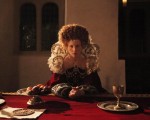
A six part series called “The Last Days of Mary Queen of Scots” starts this Thursday on Channel 5 in the UK. Here is the blurb from the Radio Times:
[Read More...]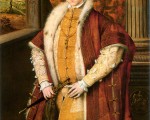
On 20 February 1547, King Edward VI was crowned King at Westminster Abbey. Here are some primary sources regarding his coronation, including Archbishop Cranmer’s speech comparing Edward to Josiah.
[Read More...]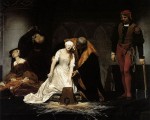
A primary source account of the executions of Lady Jane Grey and Lord Guildford Dudley on 12 February 1554.
[Read More...]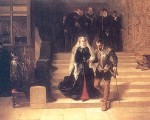
This primary source account of the execution of Mary, Queen of Scots is from Original letters, illustrative of English history; with notes and illustrations, Second Series, Volume III, ed. Henry Ellis (p113-118). Ellis notes that “the present narrative is from the Lansdowne MS. 51. art. 46. It is indorsed in Lord Burghley’s hand, “8 Feb. 1586. The Manner of the Q. of Scotts death at Fodrynghay, wr. by Ro. Wy.””
[Read More...]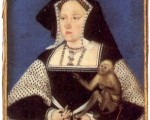
On this day in history, 31st January 1510, Queen Catherine of Aragon gave birth to a still-born daughter. Although she had lost her baby, Catherine’s abdomen stayed rounded and actually began to increase in size, leading her physicians to conclude that she was still pregnant with the twin of the baby she’d lost. This was not true.
I thought it would be interesting to share the primary source account of this event here.
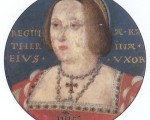
Following Catherine of Aragon’s death on the afternoon of 7th January 1536, her body was prepared for burial by a chandler in her household, whose job it would have been to embalm her body. Sir Edmund Bedingfield and Sir Edward Chamberlain wrote to Thomas Cromwell from Kimbolton on 7th January about the arrangements they had made:
[Read More...]